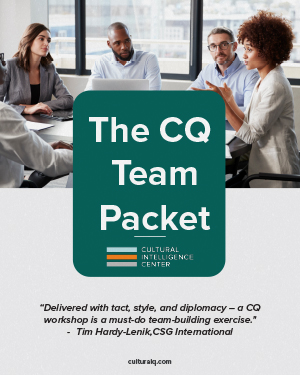Not long ago, I sat down with the superintendent of a 2,300 student U.S.-based K-12 school system. He was so excited to share all of the diversity efforts his school district was planning for the coming academic year. He had the support of top leadership, the majority of his teachers and staff were on board, and everyone was committed to allocating a fair amount of financial resources towards it. This all sounded like the perfect recipe for winning in their diversity and inclusion work—at least on the surface. But as the conversation unfolded, I asked him two very pointed questions:“How do you know that your efforts are the right ones for moving your diversity work forward?” and, “How will you know they are working?” His blank stare answered both questions.
I can assure you that my questions were not intended to discourage him. In fact, I would have given the school system an “A” for their efforts. However, this scenario of assuming that “activity” guarantees “winning” is quite common. And not only among K-12 U.S. schools. It includes primary and secondary schools and universities across the globe. Worst yet, it can be challenging to detect because the efforts, in and of themselves, are usually good. For example, it’s not a bad thing for a school in the U.S. to encourage students to acknowledge a cultural holiday like Martin Luther King, Jr. Day or for a university in Australia to recognize National Aboriginal and Islanders Day. At the same time, if a school or institution is going to become a culturally intelligent community, every effort needs to have a clear purpose and meaningful impact.
To know if your school or institution is winning, here are four things to consider:
Know Where You Are On The Journey.
Becoming a diverse, inclusive, and culturally intelligent school is a process. Be honest about where you are in that process. Know your context, strengths, and pain points, as well as the diverse needs of your students, teachers, faculty, and staff. If you don’t understand or are in denial about these issues you become vulnerable to shooting in the dark or doing anything just to make it feel like you are at least doing something. Or worst yet, you default to “checking off the box.” The most obvious is demonstrated leadership commitment, but there’s so much more. You have to consider access and equity issues, the organizational culture and the curriculum. You need a thorough review of policies and practices and to ask the question: do they serve as benefit or barrier to our efforts to become a culturally intelligent school community or university?
Focus on Results Not Activity.
Observing diverse traditions, celebrations, and holidays from other cultures is one of the most common diversity practices. Not only is there nothing wrong with these activities, but they can be an easy and fun way to connect students, teachers, faculty, and staff from different cultural backgrounds. But the problem arises when such activities become part of a checklist of efforts that, instead of becoming one of many means to a strategic end, they become the diversity strategy with little to no meaningful results. So, how do you know when your efforts are focused on results and not activity? Vet them through what I call the “SAM rule” by asking three key questions:
-
- Is it Sustainable?
- Is there Accountability?
- Is it Measurable?
If the answer is “no” for any of these questions, revisit if the activity is useful and contributing to a broader strategic road map for becoming a culturally intelligent organization.
Develop High Impact, Quality Intervention Strategies.
The CQ Assessment is a great tool to measure your efforts, particularly when it comes to developing the cultural intelligence of students, staff, teachers, and faculty. But it is just that: a tool. The assessment alone does not have the ability to improve their CQ. Only high impact intervention strategies can do that. Quality classroom instruction, diverse course content, and co-curricular activities for students are the types of interventions necessary to develop their CQ. Similarly, professional development, training, and resources are what teachers, faculty, and staff need to improve their cross-cultural effectiveness when engaging with students and their peers. Not investing time and resources towards these kind of strategies can significantly undermine your efforts.
Develop Relevant Metrics.
There’s a saying that numbers don’t lie. That may be true, but if they aren’t useful they may as well lie. When it comes to making progress you must identify key data points and develop relevant metrics. The data points should be inclusive of the areas mentioned earlier regarding knowing “where you are on the journey.” How will you assess leadership commitment, access and equity issues, or the organizational culture? It’s also important to recognize that metrics, no matter how good, will have limited use if the overall strategic road map is weak or nonexistent. So having a clear plan is critical. As you collect and assess the data, disaggregate it. This is important because you may discover that certain cultural groups (i.e., the majority student population) may be benefiting from your efforts while others (i.e., underrepresented groups) may not at all.
Working to become a culturally intelligent school or institution is not easy. There are challenges, setbacks, moments of frustration and the feeling that you are making little to no progress. But when implementing these few tips, it is possible to make measurable progress. It is possible to win.
